Where to Store Survival Food
Getting enough food stored for you and your family can be a daunting task without having to figure out where you’re going to put all of that food! Even if your goal is only to have a few months of food for the entire family, food storage can take up a lot of space that many of us just don’t have.
Where can you store survival food? Survival food can be stored anywhere that you have space, but it should be stored in a cool, dry place. Try these areas out:
- Kitchen
- Basement
- Under the Bed
- Closets
- Living Space
- Under Furniture
- Under the Stairs
- Dead Space
- Laundry Room
- Water Heater/Mechanical Room
- Crawlspaces
- Garage
- Campers and Boats
- Sheds
- Window Wells
- Caches
- Bug Out Location
You’re really only limited by your imagination. Think out of the box and you’ll probably come up with many more places to store your survival food.
[wc_toggle title=“Table of Contents” padding=“” border_width=“” class=“” layout=“box”]
[/wc_toggle]
Where Should You Store Food?
There are all kinds of places that you can use to store your survival food at home. Some are really obvious and some aren’t as obvious. When you’re looking for an area to store your food, keep these general guidelines in mind:
Temperature:
- If the temperature is comfortable for you, then it’s probably fine for your food.
- If it feels a little too hot, then you’re still probably fine, it may just decrease the shelflife of your a little.
- If it feels a little too cold then you’re probably going to extend the shelflife of your food.
- If it’s uncomfortably hot or cold then you may damage the food and/or the containers the food is stored in. (You can still use this are if you have to but it’s not ideal.)
Humidity:
- If the area is very dry then you don’t need to worry.
- If the area is very humid, your food stores may grow mold on the outside of the containers and certain containers could be damaged. (High humidity will damage cardboard, paper, and similar containers very fast.)
Sunlight:
- Dark areas tend to be better areas to store food.
- Areas with a lot of sunlight can be damaging to food storage containers and promote the growth of unwanted organisms.
Airflow:
- Areas with good airflow are more likely to remain dry, and cool.
- Areas with poor airflow will remain wet for extended periods of time if they get wet.
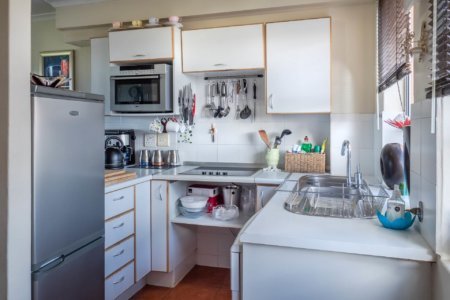
Kitchen - Storing food in the kitchen is a no-brainer when you first start looking for places to store food. You’re probably already storing food there so you can just keep adding food to the kitchen until you run out of space.
Most kitchens don’t have enough space to store many months of food for a family, but they make an easy place to start. Once you fill the kitchen up, start looking for other areas to store your food.
The only real drawback of storing food in your kitchen is that you may unintentionally stow off your food stores to visitors.
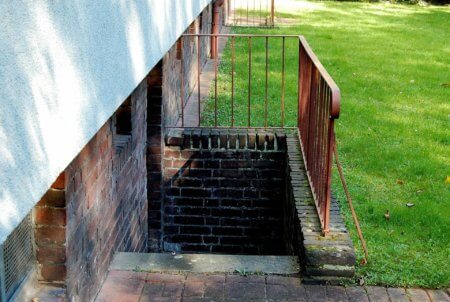
Basement - The basement is one of the main areas that people store their survival food. It’s best if you have a finished basement, but any basement will work.
Most people can make a large amount of space available in their basements for food storage. If you haven’t finished your basement already, it’s a great idea to add in a food storage room when you do. This makes finding space to store food and water much easier.
I like basements for survival food storage because they typically remain cool, even in the summer and they let you put your food in an area that’s not visible to everyone that happens to visit your home.
If you have insect or rodent problems then your basement may not be ideal for food storage. Some basements also have issues with water and dampness. If you have these problems, be sure to tackle them before you begin storing food in your basement.
Under the Bed - The space under the bed is normally completely wasted. I find that putting some of my food storage under there is a great way to put that space to use.
If you don’t happen to have enough clearance under your bed, you can use something as simple as bricks to add a little extra height. Normally this is enough to give you plenty of room to get cases of #10 cans or other items under your bed.
The best part of storing food under the bed is there really aren’t any drawbacks. The space under your bed typically isn’t being used anyway.
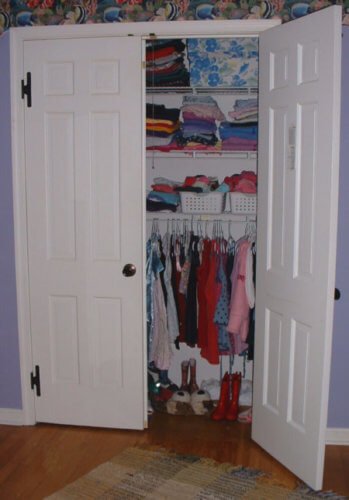
Closets - Closets are another natural space to store food. They’re designed to be storage spaces so why wouldn’t you use it?
If you’re like me, then you probably have a lot of other things jammed in your closets. Go through them and get rid of all the junk that you have in there. If you haven’t even opened that box from when you moved 5 years ago, you can probably safely get rid of it and never miss it.
Try to use all of the available space in your closets. This means stacking food up behind the clothes that are hanging in there and filling in space on the shelves.
If you have room above the door in your closet, you should look into building some over the door shelves. Some closets can gain a huge amount of storage by using this wasted space!
Living Space - Storing food around the living spaces in your house is where your creativity will really start to come into play. The good thing is you’re really only limited by your imagination.
Another way to creatively add storage to your living spaces is by stacking cases or totes and covering them sheets or table cloths to create coffee tables and end tables. It’s hard to make these look like something other than a pile of boxes with a sheet on them. You can try to put circular pieces of plywood under the sheet and bring the base of the sheet in a little to give it a tapered look. Changing the chape can really make it look more convincing.

Under Furniture - If you’re struggling to add storage areas to your living spaces you can try to slide food under your existing furniture. If thre isn’t enough room, you can raise your couches and tables a few inches by putting them up on bricks.
One of the ideas that I really like is creating theater seating by stacking some of your food and placing a couch on it. You can then put another couch in front of the elevated one and you have homemade theater seating. To give it a finished look, you can simply tack a similar colored cloth around the base of the couch to hide the food underneath.
Under the Stairs - Most homes are already using the area under the stairs for closet space or some other storage area. If the area isn’t being used then it’s a great place to add storage space for your food storage.
You can pack the area as full as you can then just staple a sheet up to hide the fact that you’re storing food under there.
Dead Space - Look around your house or apartment for other dead space. Decorative trunks and cabinets are a great place to start. There’s usually even some room behind your T.V. to get some more survival food stored.
Laundry Room - The laundry room is another good area to find more space to store your food storage. Most laundry rooms have wasted space that can accommodate more shelving or, at the very least, have space on the top of the washer or drier that can be used.
The laundry room does have some challenges associated with it. They can get very warm when the dier is running, they’re usually more humid than the rest of the house when the machines are in use and they’re more likely to experience water spills that more other places that you’d store your food storage in the house.
Water Heater/Mechanical Room - This is another area in the house that typically ends up just being a catch-all for boxes or other things that you just feel like hanging onto for no reason. Get rid of the useless things and make room for some of your extra food.
The drawbacks of using these areas are very similar to storing food in the laundry room. Water heaters and water softeners can break and soak the floor. Try to keep your food storage that would be affected by water up off the floor.
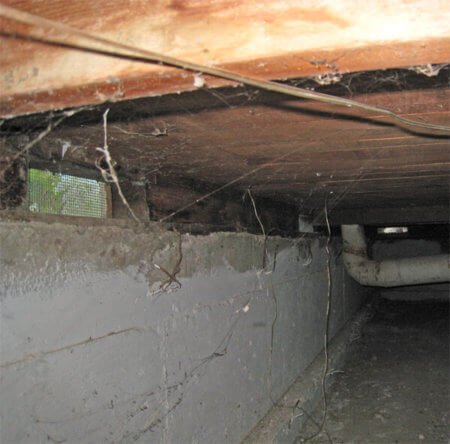
Crawlspaces - A crawlspace is going to be different depending on where you live. For some, you may have a basement with a crawlspace to allow access to pipes and other utilities under the house. If you happen to have one of these styles of a crawlspace, then you can easily use that area for more survival food storage.
These areas are usually dirty and are places where insects or rodents tend to gather. Just keep that in mind when you’re putting food in there. As long as you’re storing the food securely you should be good to go.
If you have a crawlspace that opens to the outside of the house, then it isn’t quite as attractive as a storage area. You can still use it, but I’d suggest packaging your food as if you were placing a cache. These areas still have the advantage of staying cooler than many other outdoor areas and being relatively well protected from the elements.
Garage - At first glance, the garage may seem like the ideal place to put some of your food storage. In actuality, it really isn’t. The temperatures can get incredibly hot in the summer and drop below freezing in the winter. This is going to make long term food storage in the garage a problem.
If you have to use the garage, you can, but just do so knowing that you’ll be decreasing the life span of your food.
Campers and Boats - If you happen to have a camper or a boat, they can be used as a storage area if need to use them. They’re not ideal but they can work.
Campers are going to get really hot in the summer and cold in the winter. As long as that is okay with you, they’ll keep your food out the elements and are already loaded if you plan on taking the camper if you need to bug out.
A covered boat in the driveway will make a better storage area than a camper. You can keep the boat from getting overly hot by allowing for good airflow under the cover. Your food won’t be secured so you could get stolen if someone starts poking around your boat.
Sheds - Sheds have the same problems that garages have. They get really hot and really cold, tend to attract insects and rodents and are probably easier to break into than your garage.
You can still use a shed to store food, but you have to accept that it’s far from ideal.
Window Wells - This is an interesting idea that’s kind of a middle ground between caching your food and having it at home. By building or buying covers over window wells, you can make a pretty good area to store 5-gallon buckets or other containers that would do okay exposed to a little bit of moisture.
If you make sure you can lock these areas, your food will be pretty secure and you’d still have access to the food from inside your house.
Caches - Caching survival food is an acceptable idea to me as long as it’s done in an intelligent way. Just randomly stashing food around outside isn’t going to work.
If you have a lot of property, then caching food on the property can ensure you’ll have food if something happens to your house. If you have a bug out plan that involves traveling a long distance on foot, then it could make sense to stash come food along the route you plan to take.
You have to be sure to store the food in a way that will stand up to the elements, resist pests and not attract people in the time between when you cache it and when you may need it.
Bug Out Location - If you’ve decided on a bug out location, then storing food there just makes sense.
If the place that you plan on bugging out to isn’t secure enough for you to store food at, I would argue that you don’t really have a bug out location. If it’s someone else’s house then just plan with them to make some room to store a decent amount of food.
Related Questions
How Do You Store Survival Food? You store survival food by sealing long shelf life foods in airtight, and watertight containers that don’t allow insects and rodents to get into them. Store the packaged food in a dry, climate-controlled area that doesn’t get much sunlight.
What is the Best Survival Food with a Long Shelf Life? White rice, dried beans, and rolled oats are some of the best survival foods with long shelf-lives. If they’re packaged correctly they can last for decades and only need water to cook.
The post Where to Store Survival Food: 17 Areas You Can Put to Use is courtesy of: https://readylifestyle.com/
Where to Store Survival Food: 17 Areas You Can Put to Use published first on https://readylifesytle.tumblr.com
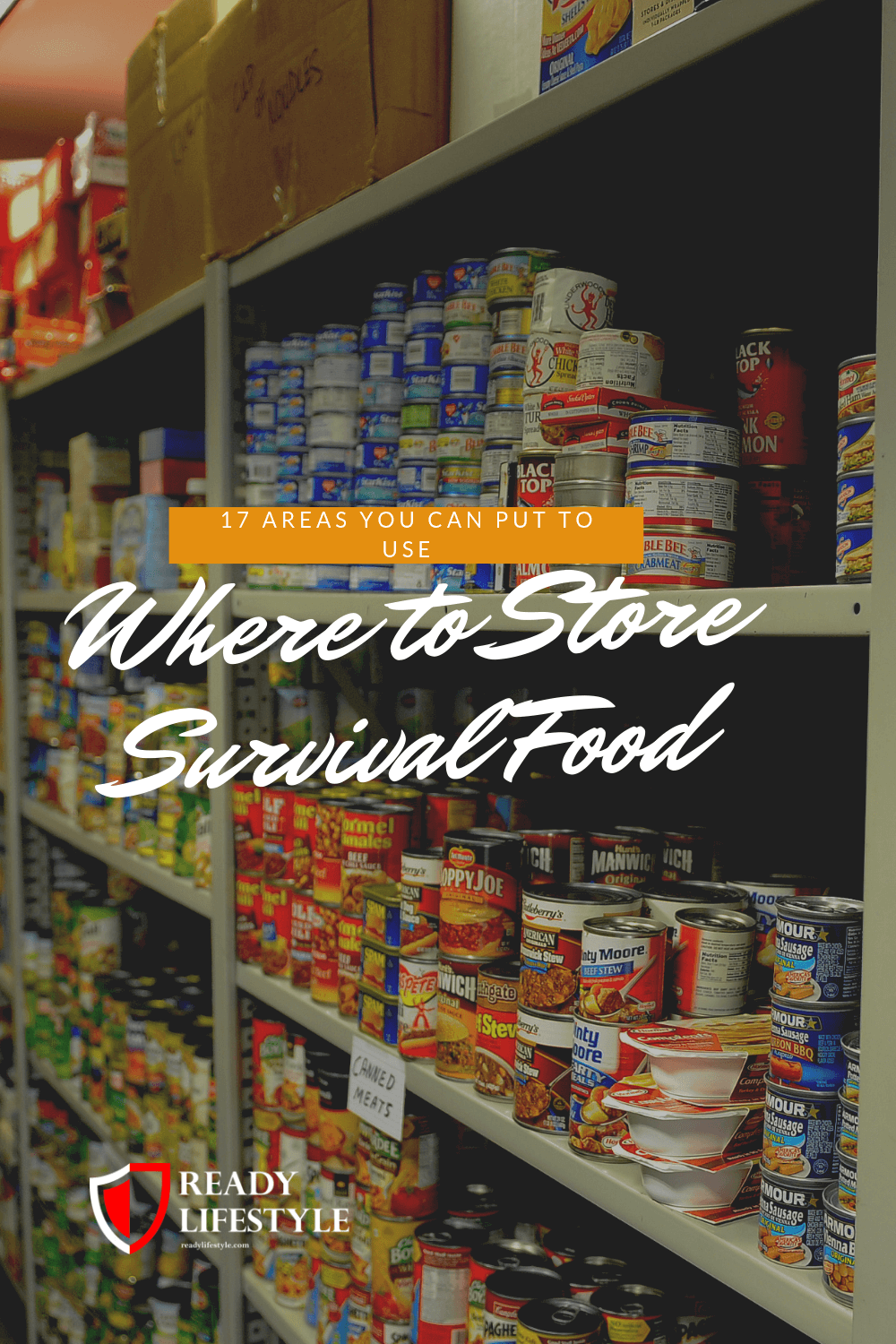
Comments
Post a Comment